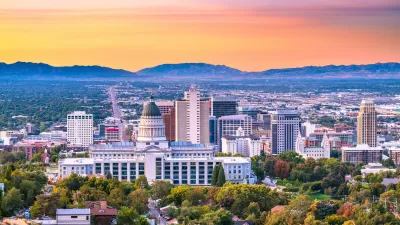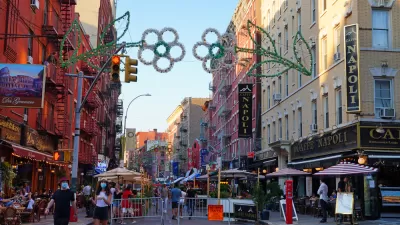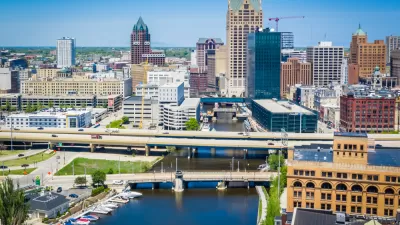Morgan Brennan looks at the demographic and cultural factors driving America's "most surprising real estate boom," and examines how some cities have targeted investments to attract young professionals.
"One of the main factors businesses consider when deciding on where to relocate or expand is the available pool of college-educated workers," explains Brennan. "And that has cities competing for college-educated young adults."
"And there’s one place this desired demographic, college-educated professionals between the ages of 25 and 34, tends to want to live: tight-knit urban neighborhoods that are close to work and have lots of entertainment and shopping options within an easy walk," she notes. "In fact this demographic’s population grew 26% from 2000 to 2010 in major cities’ downtowns, or twice as fast as it did in the those cities’ overall metro areas, according to a CEOs for Cities report based on U.S. Census data. That is one of the reasons city planners have been plowing money and resources into revitalizing their core business districts."
Morgan looks at the ways that cities such as Denver, Birmingham, and Louisville are working to lure the "mobile, college-educated ‘young and restless’."
An accompanying slideshow depicts the development efforts underway in 15 of America's emerging downtowns.
FULL STORY: Downtowns: What's Behind America's Most Surprising Real Estate Boom

Alabama: Trump Terminates Settlements for Black Communities Harmed By Raw Sewage
Trump deemed the landmark civil rights agreement “illegal DEI and environmental justice policy.”

Planetizen Federal Action Tracker
A weekly monitor of how Trump’s orders and actions are impacting planners and planning in America.

The 120 Year Old Tiny Home Villages That Sheltered San Francisco’s Earthquake Refugees
More than a century ago, San Francisco mobilized to house thousands of residents displaced by the 1906 earthquake. Could their strategy offer a model for the present?

Indy Neighborhood Group Builds Temporary Multi-Use Path
Community members, aided in part by funding from the city, repurposed a vehicle lane to create a protected bike and pedestrian path for the summer season.

Congestion Pricing Drops Holland Tunnel Delays by 65 Percent
New York City’s contentious tolling program has yielded improved traffic and roughly $100 million in revenue for the MTA.

In Both Crashes and Crime, Public Transportation is Far Safer than Driving
Contrary to popular assumptions, public transportation has far lower crash and crime rates than automobile travel. For safer communities, improve and encourage transit travel.
Urban Design for Planners 1: Software Tools
This six-course series explores essential urban design concepts using open source software and equips planners with the tools they need to participate fully in the urban design process.
Planning for Universal Design
Learn the tools for implementing Universal Design in planning regulations.
Clanton & Associates, Inc.
Jessamine County Fiscal Court
Institute for Housing and Urban Development Studies (IHS)
City of Grandview
Harvard GSD Executive Education
Toledo-Lucas County Plan Commissions
Salt Lake City
NYU Wagner Graduate School of Public Service





























